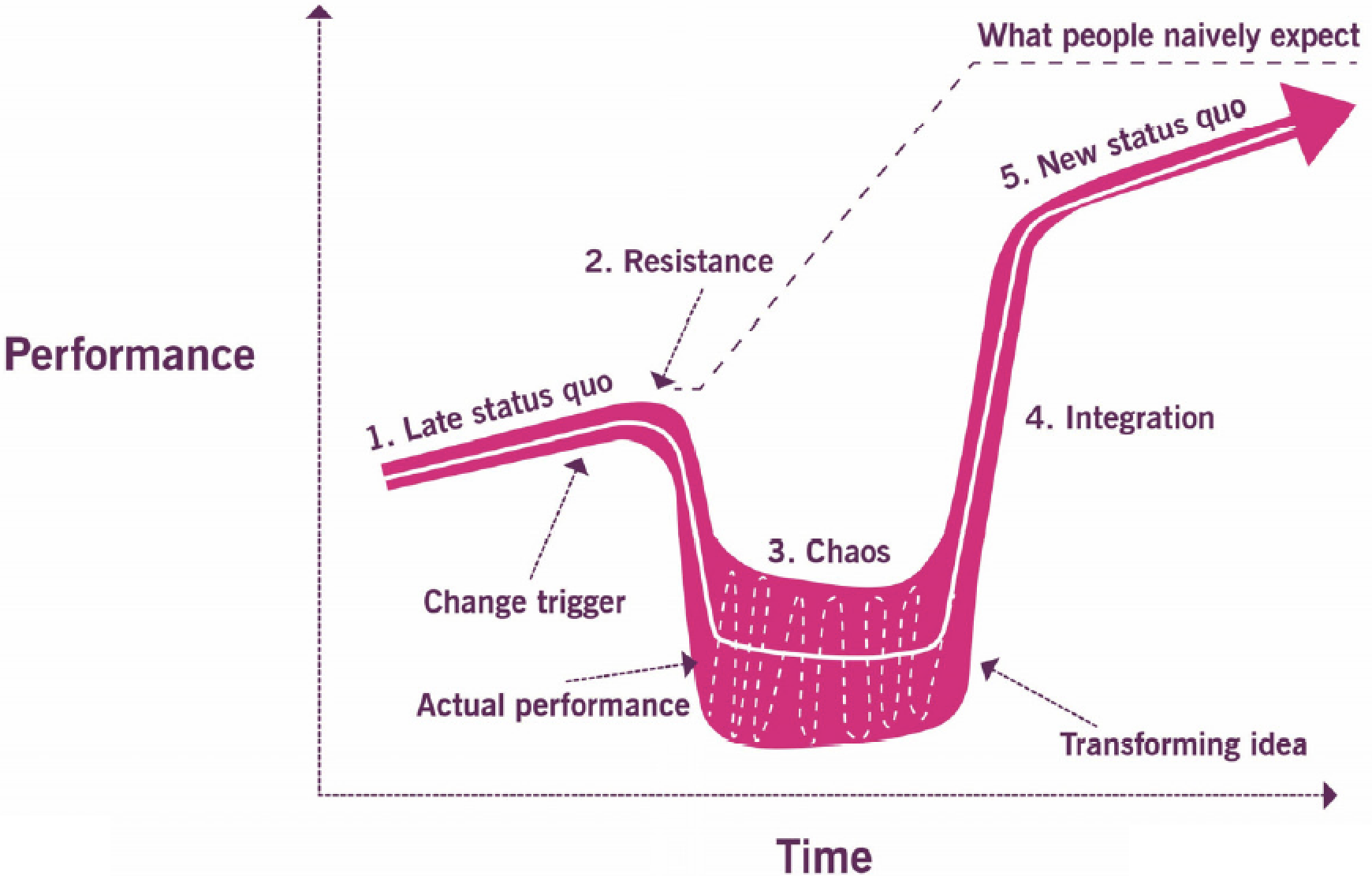ITIL 4 Strategic Leader Certification Course: Implementing a Digital Strategy - Strategy Coordination and Implementation Approaches
Much more difficult to implement than to create a strategy (less industry information on how to get it right)
Strategic plans are implemented by teams:
- Organization leaders:
- Provide funding
- Ensure resources are available
- Remove roadblocks
- Team managers:
- Decide on the best way to implement the plans
- Manage the implementation actions
Key characteristics of organizations successfully implementing their strategy:
- Clear and consistent communication about their vision (context behind the vision, and the vision itself, is communicated multiple times and in multiple formats)
- Decision-making is at the team level:
- Leadership provides direction/intent which defines the operational boundaries of team decisions
- Leaders then provide quick, decisive decisions on elements beyond the teams
- Focus on fewer initiatives:
- Better work (efficient, effective, quality) when there are less distractions
- Have a strategically-based, prioritized backlog
- Remove barriers that impede progress:
- Provide collaboration tools, approve resources for experimentation, clear communication
- Clear reporting structure that changes as needed, removal of unnecessary approvals/bureaucracy
- Large-scale transformation can be incremental or launched all at once (restructure teams to fit the need, must improve workflow, communication, collaboration)
- Dealing with setbacks:
- Understand that progress may be slower at first before velocity is achieved
- Demonstrate patience
- Executive leaders continually communicate the vision and the context
Use the Satir model to understand the stages of change (remember Kotter’s eight steps and the elements in the 7-S model):

1. Managing strategic initiatives
Strategic initiatives are projects/programs to be managed, thus manage them like any other project/program
Additional considerations:
- Be aware of projects/programs tied to multiple strategies, any changes need to be reflected across the various strategies
- Measure not only the time, spec, budget of the project but whether or not the initiative has impacted the organization and its achievement of purpose and vision (strategic-based budgeting)
- Status and progress reports to the owner of the strategy
2. Large-scale transformation
Benefit: move the organization to a future state all at once: react to urgent, external threat or opportunity
Challenge: difficult to implement (must have commitment, alignment, focus, coordination between teams)
Requires:
- Coordination between leaders
- Coordination between teams and projects
- Integrated metrics and reporting
- Challenge instances of bureaucracy
- All aspects of the organization must be addressed
- Pace to areas that are most difficult or take longest to change
3. Incremental transformation
Break an enterprise-wide transformation into smaller deployments
Start with a pilot (team, division, department, value stream)
Learn from the pilot and apply to the next project:
- Adjust according to lessons learned from each project
- Pilot team members can mentor and coach new teams
Track the individual projects as well as the overall level of change over time
Keep the longer-term focus while making short-term changes (demonstrate patience and realistic expectations for the change)
4. Mergers and acquisitions
Critical Success Factors:
- Agree the new joint vision
- Align the strategies of each organization
- Map and align practices
- Culture will evolve to something between both organization’s starting point
- Facilitate cultural change through metrics and communication aligned to the new joint vision and strategy
5. Individual changes
Rather than a strategy beginning with the executive level, an individual change can spread across the organization (grassroot strategies)
Can cause chaos if not aligned with the enterprise strategy and vision
Governance must focus on achieving a balance between encouraging innovation and maintaining the organization’s strategy
Use approaches like LEAN Change Management Canvas
Go back to ITIL 4 Strategic Leader Certification Course: Implementing a Digital Strategy to finish this chapter or to the main page ITIL 4 Strategic Leader Certification Course.
Interesting Management
-

Part 1: A good manager, better team motivation, better team productivity, better team results
When you are managing a team, “how to be a good manager” is the “must”...
-

Report optimization, increase your time management
As manager, I am doing many reports, even when I was an ITIL consultant, I still needed to do many reports...
-

Tools to get your ITIL intermediate certifications, the missing 15 points for the ITIL 4 Managing Professional
ITIL V3 is going to be obsolete...
-

The importance of the first customer meeting for the service
Managing an IT service when I start a new company is not an easy task, particularly true, if the service...



